






| Wall Brown (Lasiommata megera (Linnaeus, 1767)) |







|
|
Scientific name: Lasiommata megera (Linnaeus, 1767) Common name: Wall Brown French name: Mégère, Satyre Order: Lepidoptera Suborder: Rhopalocera Family: Nymphalidae Subfamily: Satyrinae Wingspan: 36-50 mm. Biotope: Short grass places and stony places. Coastal dunes and rocky foreshores. Disused quarries, fallow lands, railway sides and gardens. Geographic area: Western Europe, North to South Scandinavia, East to Iran, North Africa. Flight time: March to mid June, then September to October. Number of generations : 2 Caterpillar: Bright green-yellow with pale lines. Host plant: Many grasses like Tor-grass (Brachypodium pinnatum), False Brome (Brachypodium sylvaticum), Cock's-foot (Dactylis glomerata), Bents (Agrostis spp.), Wavy Hair-grass (Deschampsia flexuosa), and Yorkshire-fog (Holcus lanatus). |
The upper side of the Wall Brown's wings shows bright orange marks delimited by dark brown bands. There is a large white-centred eyespot near the apex of the forewing. The upper side of the hindwings shows several small eyespots. The underside of the forewing is similar to the upper side. The underside of the hindwings shows greyish-brown patterns with clearly visible eyespots. Females are a brighter colour than males. They are usually larger than males.. You can often observe Wall Brown butterflies, landed on stones or walls, resting in the sunshine. Wall Brown butterflies overwinter as caterpillars. |
| [To know more about the Wall Brown] [Next picture] [Top] |
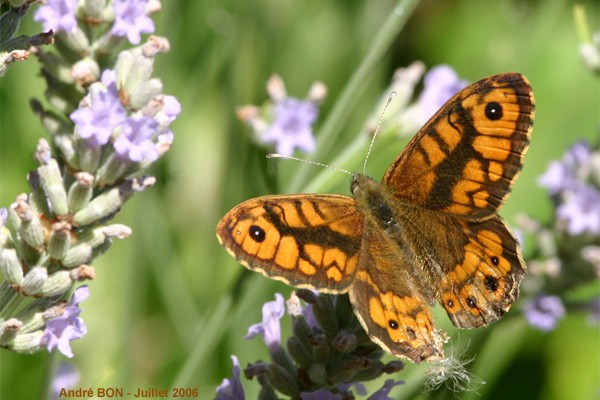
|
At this date, I have only observed one Wall Brown in my garden. Moreover this is the only one of this species I have seen in the neighbourhood. I have only seen other ones near the Atlantic coast. |
| [To know more about the Wall Brown] [Next picture] [Previous picture] [Top] |
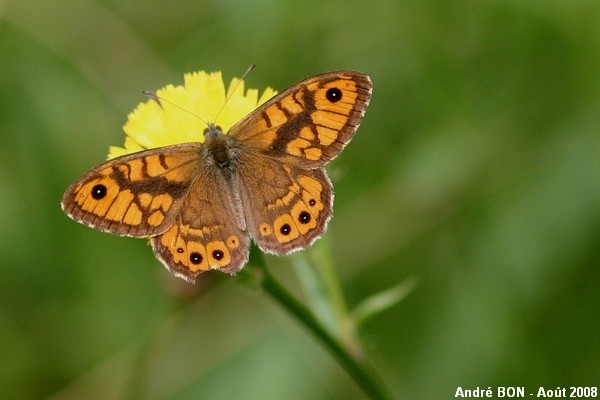
|
Males differ from females by a dark and oblique androconial stripe on the forewing. |
| [To know more about the Wall Brown] [Next picture] [Previous picture] [Top] |
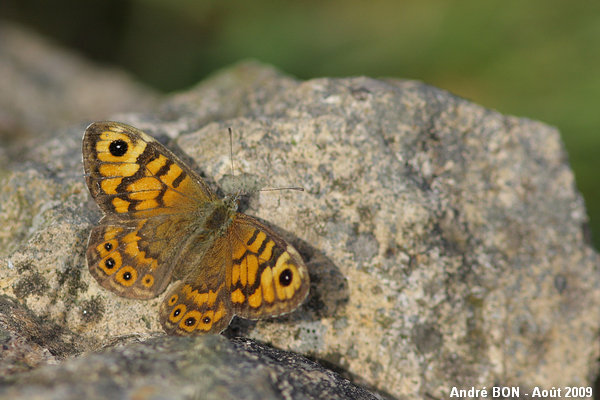
|
Here is, at least, a picture of a female you can recognize by the lack of the androconial stripe. |
| [To know more about the Wall Brown] [Next picture] [Previous picture] [Top] |
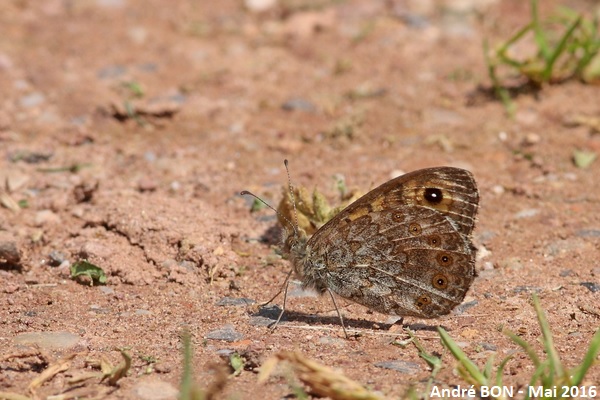
|
View of the underside of the wings of this Wall Brawn landed on the ground. |
| [To know more about the Wall Brown] [Next picture] [Previous picture] [Top] |
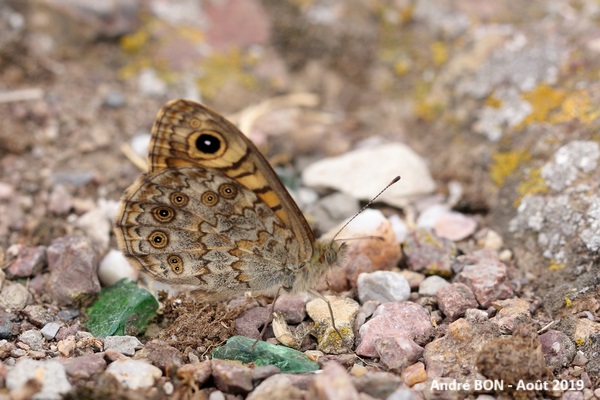
|
We are at the entrance to the Danube Delta. This Wall Brown allows us to wait before the boat trip to observe the birds tomorrow. |
| [To know more about the Wall Brown] [Next picture] [Previous picture] [Top] |
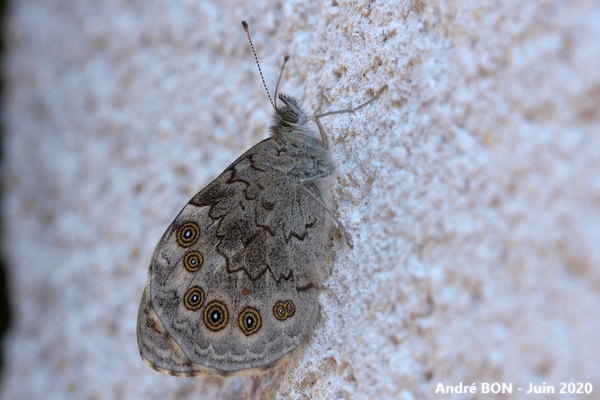
|
Is it the fact of being more assiduous in my observations or an increase in the numbers of this species? I now observe Wall Brown butterflies in my garden in the Paris region every year. |
| [To know more about the Wall Brown] [Previous picture] [Top] |
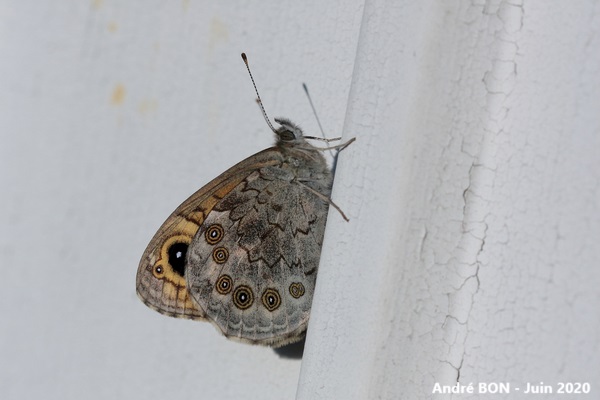
|
The Wall Brown is OK but the garage door could use a little paint. |